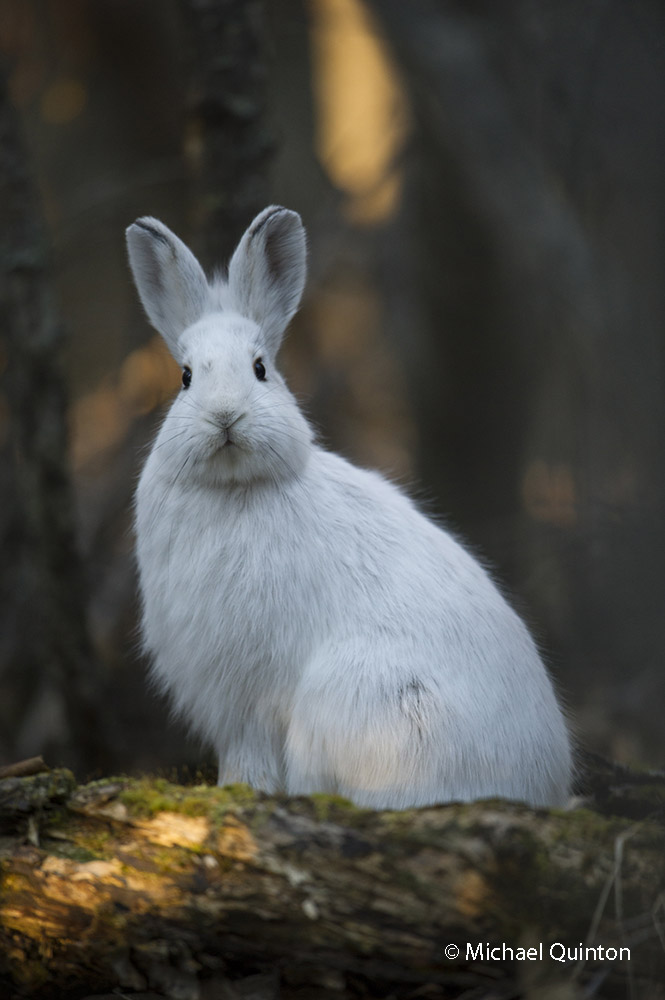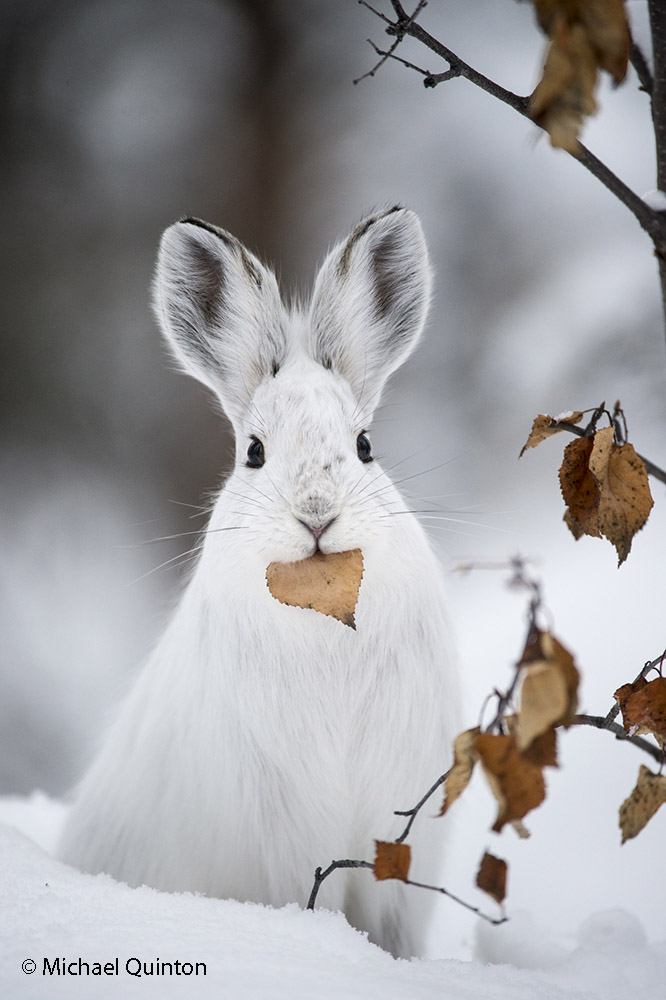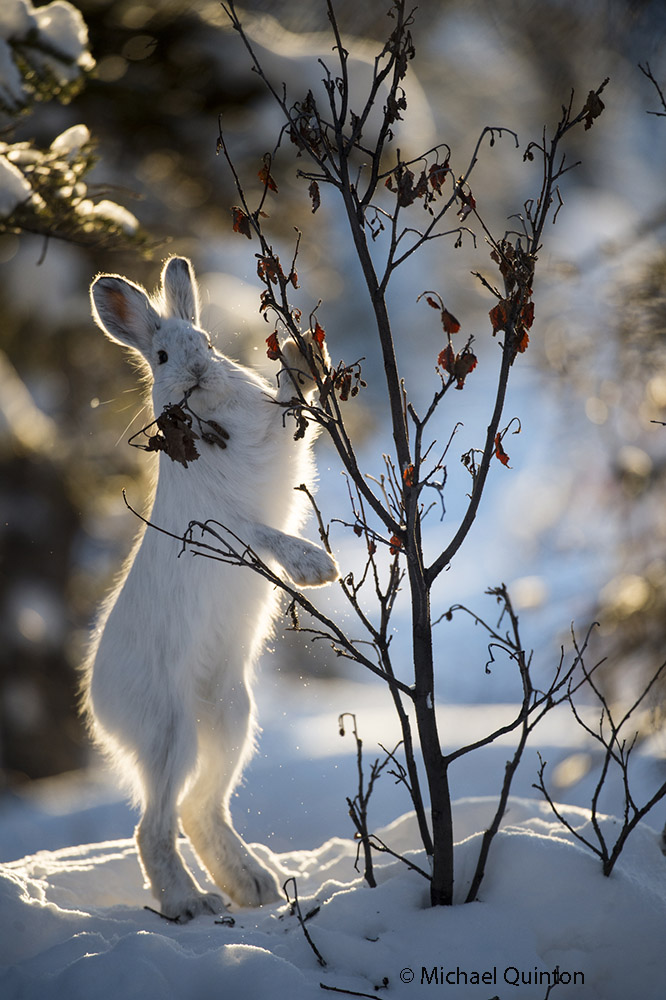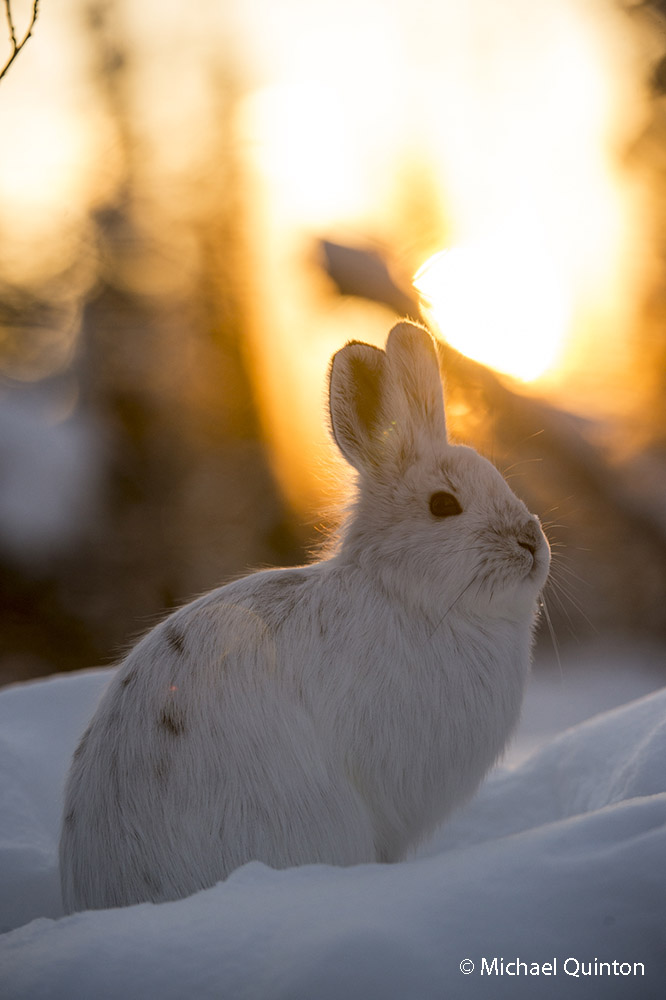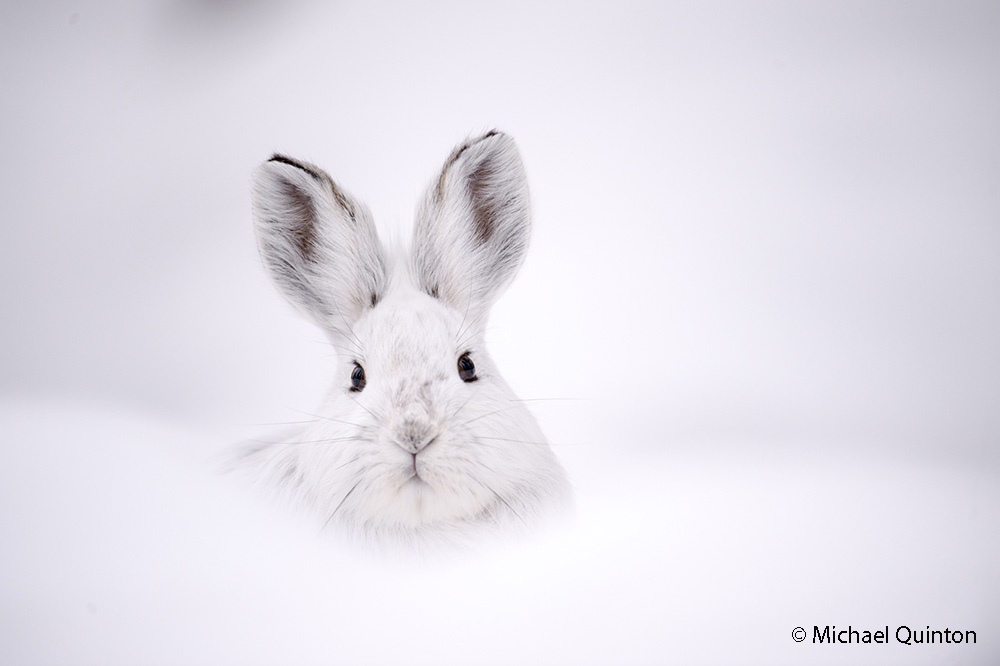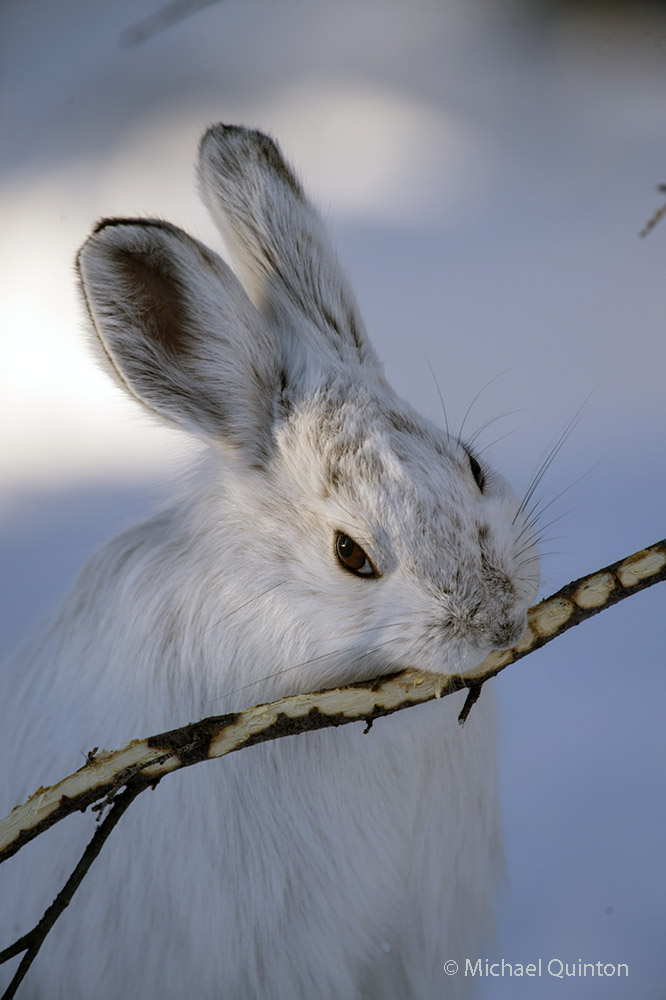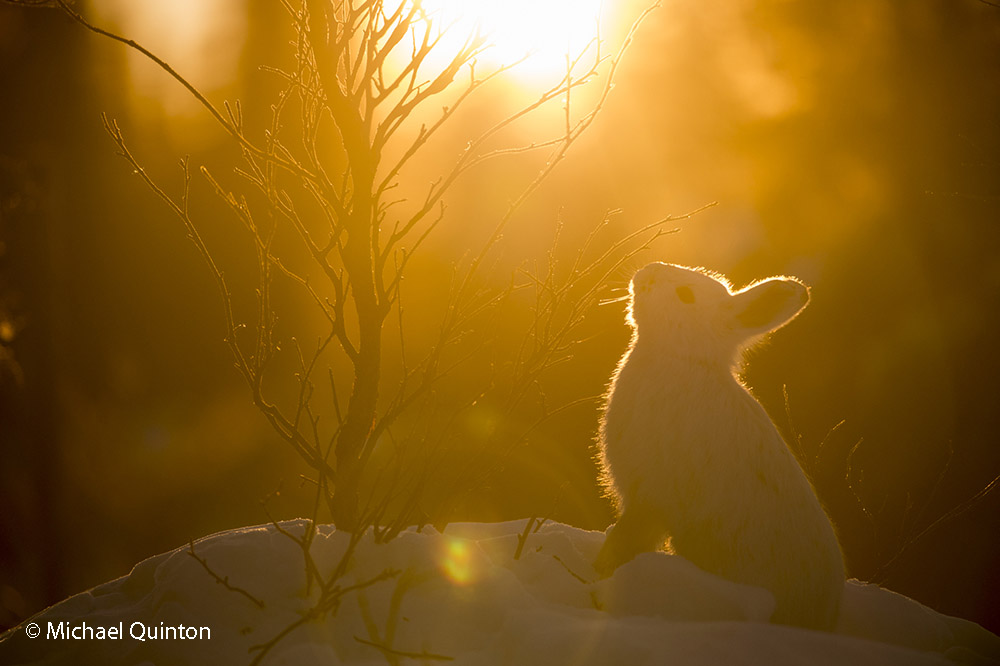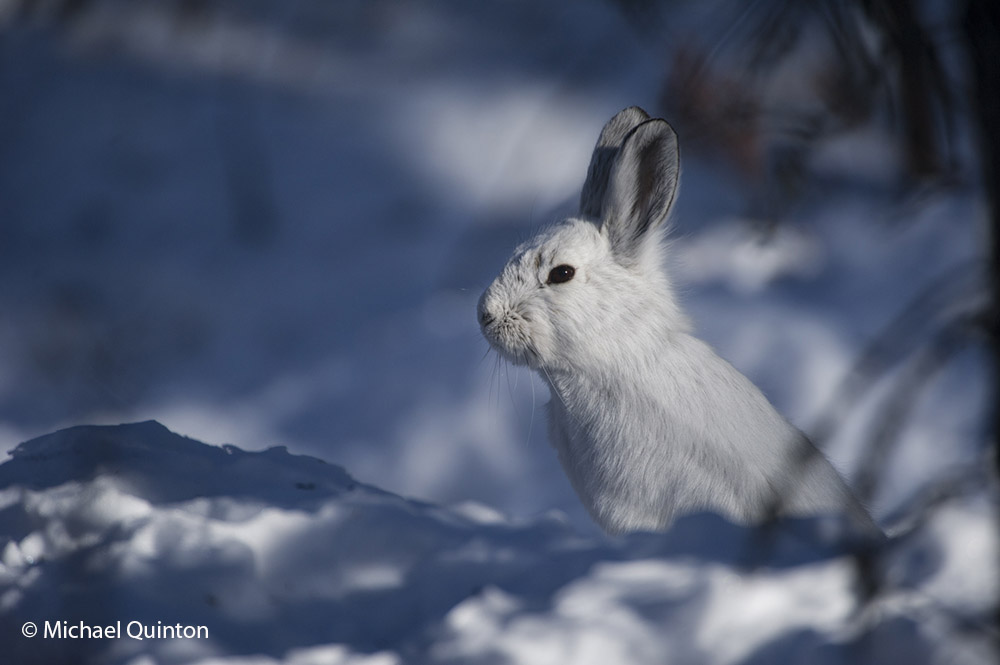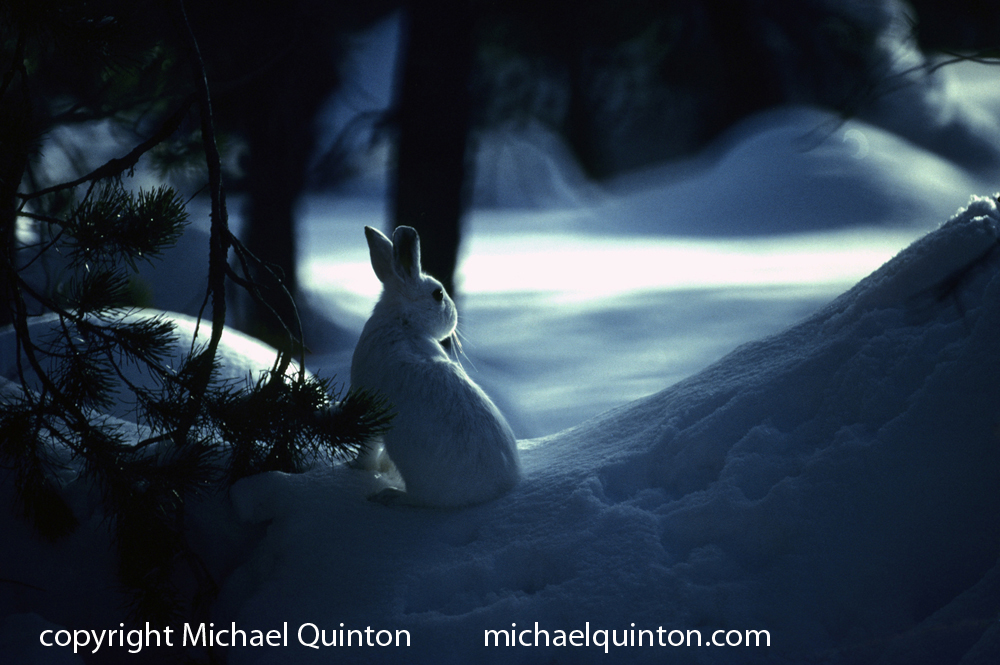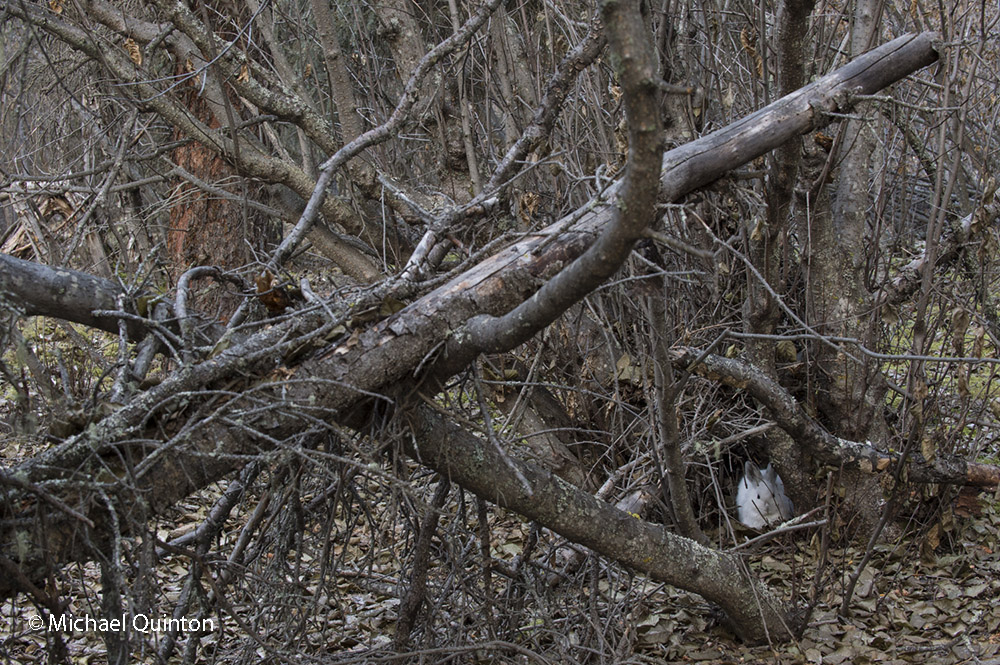 Winter seems to come later and later these past few years. And when that happens the local snowshoe hares are left feeling a bit conspicuous against their drab brown and gray habitat. The snowshoe hares count on their turn coats (brown in summer and white in winter) to help them hide from a gauntlet of predators like lynx, marten, red fox, northern goshawk, great hornedowls to name just a few.
Winter seems to come later and later these past few years. And when that happens the local snowshoe hares are left feeling a bit conspicuous against their drab brown and gray habitat. The snowshoe hares count on their turn coats (brown in summer and white in winter) to help them hide from a gauntlet of predators like lynx, marten, red fox, northern goshawk, great hornedowls to name just a few.
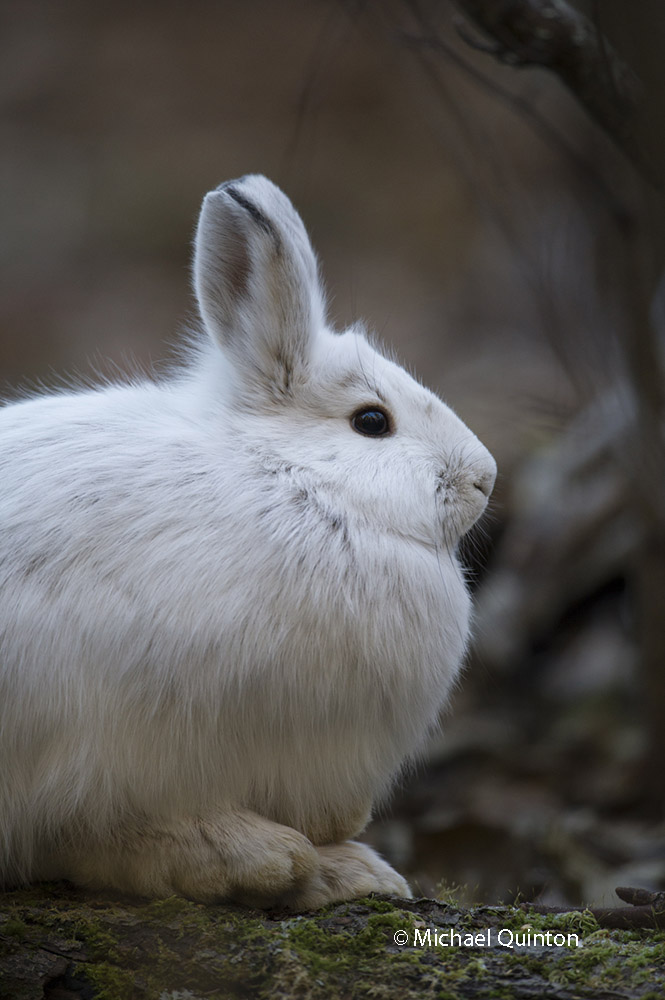 Normally shy, snowshoe hares may tire of dodging my efforts to photograph them after a few attempts and eventually allow me a few close-up shots.
Normally shy, snowshoe hares may tire of dodging my efforts to photograph them after a few attempts and eventually allow me a few close-up shots. 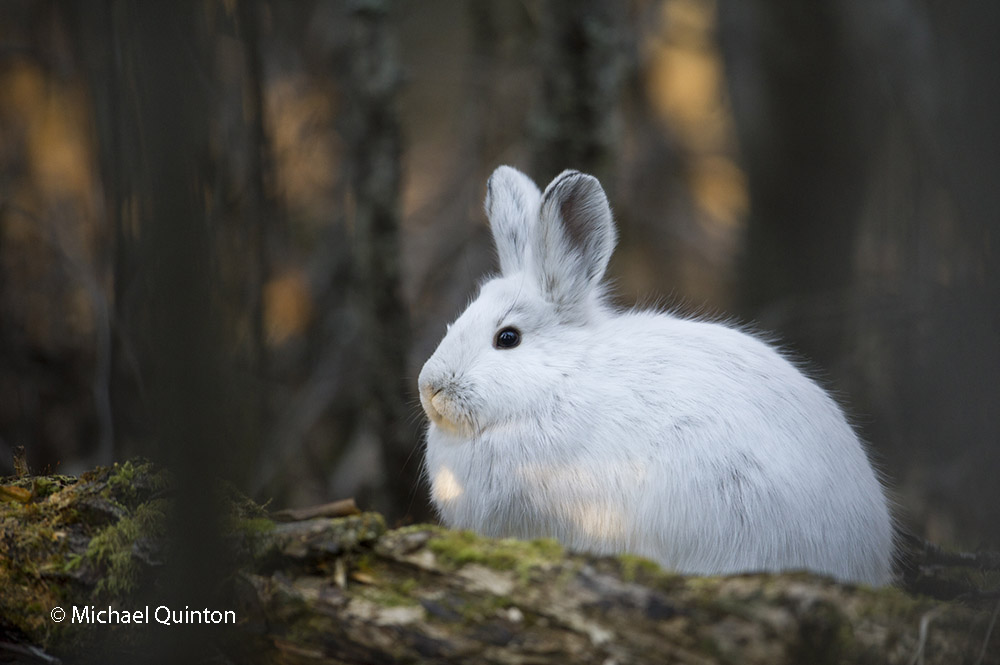 But days of white snowshoes in their snowless habitat are numbered. Snow is inevitable and soon they will be hiding in plain sight just as nature intended,
But days of white snowshoes in their snowless habitat are numbered. Snow is inevitable and soon they will be hiding in plain sight just as nature intended,

